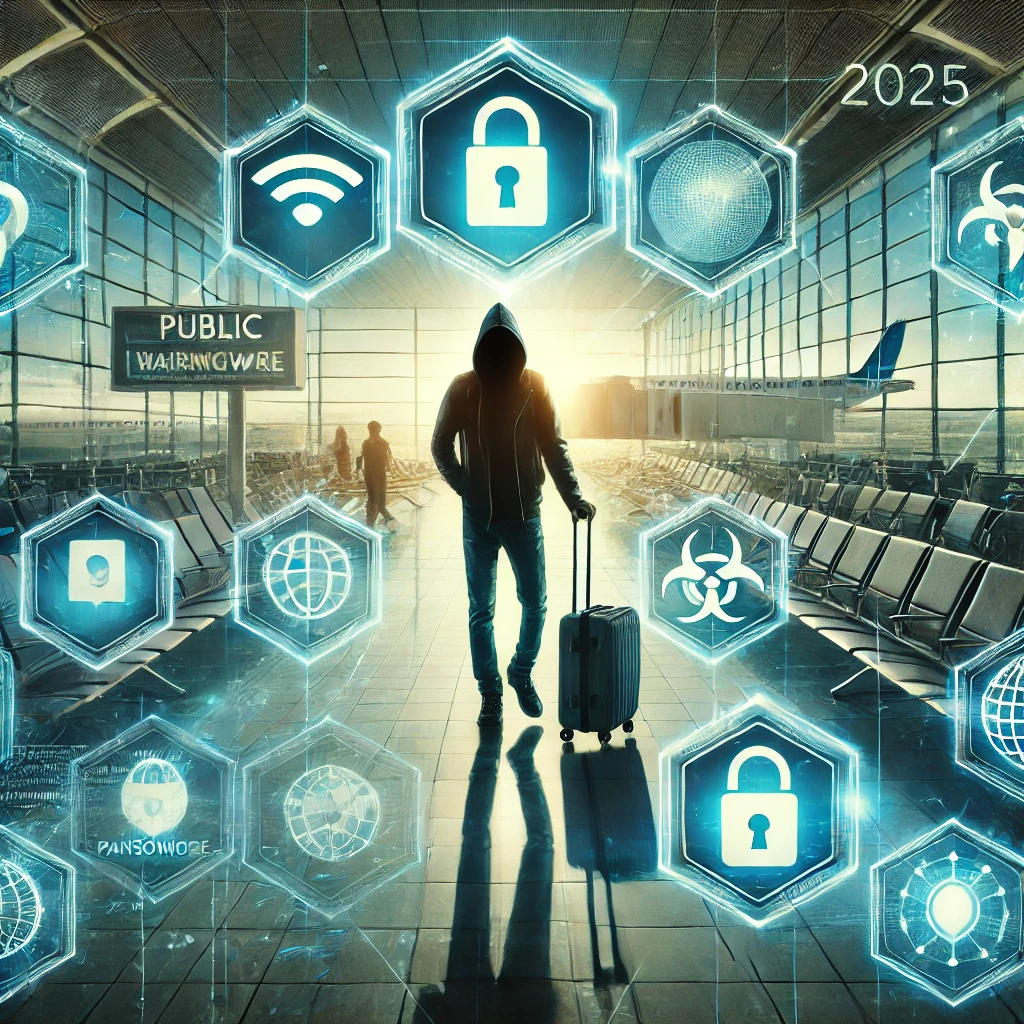Travel Cybersecurity Alert: Top Threats Travelers Face in 2025
The dawn of 2025 has ushered in a new era of travel filled with convenience and innovation. However, as travel technology strides forward, so does the sophistication of those looking to exploit it. Cybercrime has emerged as one of the most pressing security threats travelers face today. This article explores the top cybersecurity risks in 2025 and provides actionable insights to help travelers protect themselves.
The Rise of Cybercrime in Travel
While travel has become more efficient, these advancements have created more opportunities for cybercriminals. The modern traveler relies heavily on digital solutions, from mobile boarding passes to app-based hotel check-ins, leaving personal information potentially vulnerable to hackers.
Why Cybersecurity is a Concern in 2025
The integration of Artificial Intelligence (AI) and the Internet of Things (IoT) in travel infrastructure has provided countless benefits but also exposed new vulnerabilities. Travelers are now unwittingly sharing more data than ever before, presenting cybercriminals with more targets.
- Increased Data Transmission: Use of public Wi-Fi in airports, hotels, and cafes is ubiquitous, making intercepted connections a goldmine for cyber thieves.
- IoT Vulnerabilities: Everything from smart luggage to in-flight entertainment systems is connected to the internet, offering hackers points of access.
- Digital Payment Systems: The rise of contactless payments and digital wallets makes hacking attempts more enticing and rewarding.
Top Cybersecurity Threats
Understanding the major cybersecurity threats faced by travelers is crucial in 2025. Here, we examine how these dangers manifest and how to combat them effectively.
1. Phishing Attacks
Phishing attacks remain one of the most prevalent cybersecurity threats. By masquerading as legitimate entities, cybercriminals trick travelers into revealing sensitive information.
- Fake Travel Booking Sites: These sites appear identical to genuine travel booking websites but are designed to steal credit card information.
- Spear Phishing: Personalized emails that seem to come from trusted sources (e.g., airlines or hotels) lure travelers into providing personal identifiers.
Prevention Tip: Always verify website URLs and emails to ascertain authenticity. Utilize trusted travel apps and confirm through official channels.
2. Public Wi-Fi Risks
Public Wi-Fi networks are notoriously insecure. Hackers utilize these networks to execute man-in-the-middle attacks, intercepting communications between a traveler’s device and a network.
Prevention Tip: Avoid accessing sensitive information over public Wi-Fi networks. Use Virtual Private Networks (VPNs) to encrypt data when necessary.
3. Ransomware Attacks
Ransomware attacks have become increasingly sophisticated, targeting both individuals and enterprises associated with travel. This malicious software encrypts a victim’s data, demanding a ransom for its release.
Prevention Tip: Regularly backup data to a secure location and keep antivirus and antimalware software up-to-date to prevent ransomware infiltration.
4. Mobile Device Theft
With the majority of travel information stored on smartphones, the physical theft of these devices presents a significant threat. Unauthorized access can lead to stolen identities and compromised accounts.
Prevention Tip: Use strong passwords, biometric security features, and remote-wiping capabilities for smartphones.
5. Cyber Espionage
Travelers, particularly business travelers, may fall victim to cyber espionage. Hackers, possibly state-sponsored, attempt to gather sensitive business-related or government information.
Prevention Tip: Use secure communications channels and remain vigilant about sharing sensitive information over insecure networks.
Best Practices for Travelers
Being informed about prevalent cybersecurity threats is the first step. Implementing robust cybersecurity measures while traveling can bolster defense against cybercrime.
Prepare Before You Depart
- Update Software: Ensure all devices have the latest security updates before leaving.
- Backup Data: Store sensitive data in secure, offsite locations.
- Install Security Apps: Utilize apps that offer VPN and anti-malware protections.
Stay Secure During Your Journey
- Verify Networks: Connect only to secure networks and authenticate connections.
- Monitor Bank Accounts: Regularly check banking and credit card activity for unauthorized transactions.
- Disable Auto-Connect Features: Prevent unintended connections to unfamiliar networks.
Post-Travel Protocols
- Assess Security Logs: Check for any signs of unauthorized access or data breaches.
- Change Passwords: Regularly update passwords for all accounts.
- Report Suspicious Activities: Notify authorities immediately if you suspect any data breaches.
Conclusion
As technology continues to evolve, the need for heightened cybersecurity awareness in travel becomes increasingly important. By staying informed and implementing best practices, travelers can better protect their personal information from the growing threat of cybercrime in 2025. Safeguard your journey, stay alert, and enjoy the conveniences traveling in the digital age offers, without compromise.










